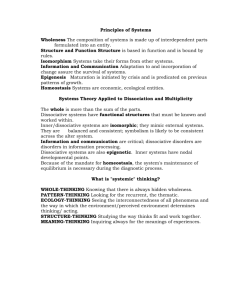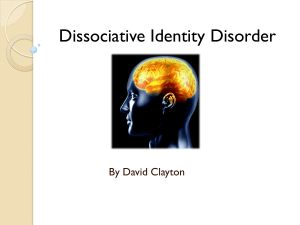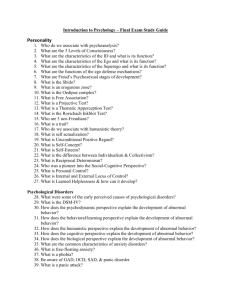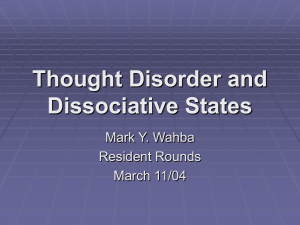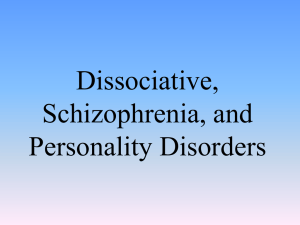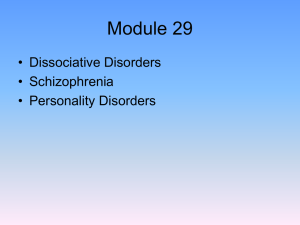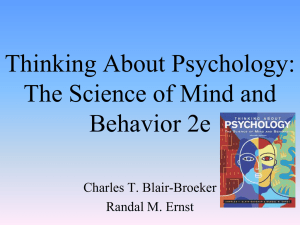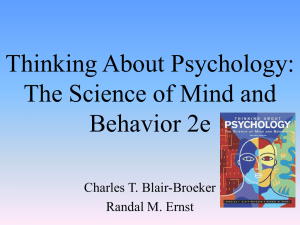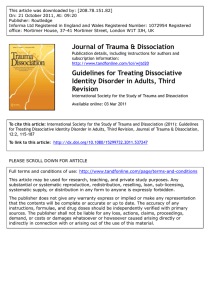Dissociative Identity Disorder
advertisement
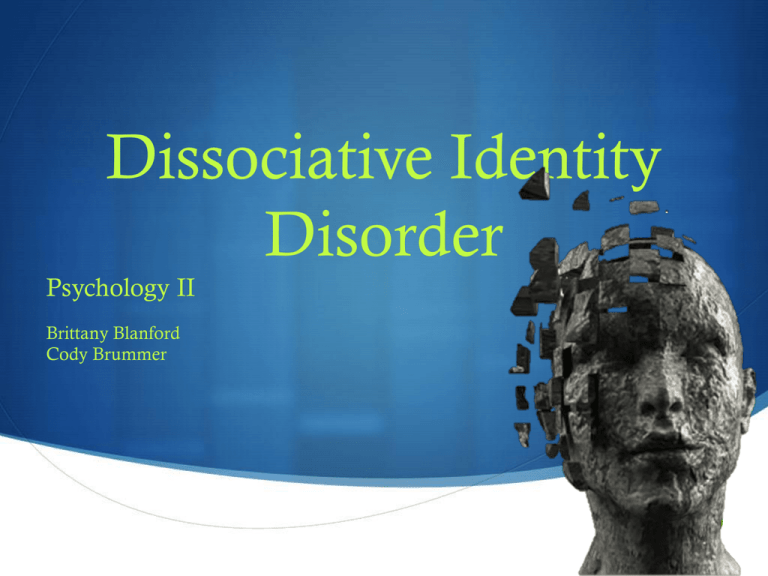
Dissociative Identity Disorder Psychology II Brittany Blanford Cody Brummer S About D.I.D. S Dissociative identity disorder (DID), formerly called multiple personality disorder, is an illness that is characterized by the presence of at least two clear personality states, called alters, which may have different reactions, emotions, and body functioning. S One of the most controversial psychiatric illnesses with no clear consensus regarding its diagnosis or treatment S At least two or more distinct identities are present in a case of D.I.D. Connection To Schizophrenia S In the Diagnostic and Statistical Manual of Mental Disorders, the developmental and personality disorders fall under the category of Axis II disorders S D.I.D. has a more clear cut way of identifying itself in a person compared to schizophrenia. Schizophrenia is identified in many different subtypes. S D.I.D. and schizophrenia show different symptoms with rare similarities Connection To Schizophrenia Differences Dissociative Identity Disorder Schizophrenia Anxiety Emotional blunting Depression Intellectual deterioration Sleep Disorders Social Isolation Mood Swings Disorganized speech and behavior Suicidal Thoughts Delusions Auditory and visual hallucinations Hallucinations Statistics S Affects between 1 and 3% of general U.S. population S 7% of general population are undiagnosed S Is diagnosed more in North America than any other part of the world U.S. Population Diagnosed Causes S Many experience physical, mental, and sexual abuse S Is also biologically passed through relatives S Environmental and biological factors Symptoms S Depression S Mood swings S Suicidal thoughts S Sleep Disorders S Anxiety S Alcohol and drug abuse S Auditory and visual hallucinations S Eating disorders Diagnosing S At least two or more distinct identities that have noticeable thoughts about the environment and self. S Different identities are taking control of the person's behavior at different times. Recalling the events is hard when switching between them. S Recalling important personal information is difficult for the individual. Personal info too general to be forgotten by ordinary forgetfulness has been shown. S Has been proven to not be the result of blackouts, alcohol intoxication, or partial seizures which are typical symptoms od DID Treatment S Psychotherapy is the treatment of choice for individuals suffering from any type of dissociative disorder. S Medications are not recommended S Self-help support groups Examples S Tony is diagnosed with D.I.D. He has at least 53 known personal identities. Richard and DD are two specific named identities. Tony can’t remember what happens when the other identities take control. Here we see his identity changes take place. http://www.youtube.com/watch?v=7iHJfIH20TY S Holly talks about her personal experiences of dealing with alters. (Identities) She is the author of Dissociative Living. She specifically talks about an alter that threatened to kill her, and how she learned to have gratitude for the alter.http://www.youtube.com/watch?v=Zi4oxWBXuFw Sources S http://www.medicinenet.com/dissociative_identity_disorder/article.htm S http://www.webmd.com/mental-health/dissociative-identity-disorder-multiplepersonality-disorder S http://psychcentral.com/disorders/sx18t.htm S http://www.healthyplace.com/abuse/dissociative-identity-disorder/treatment-ofdissociative-identity-disorder-did/ S www.youtube.com
